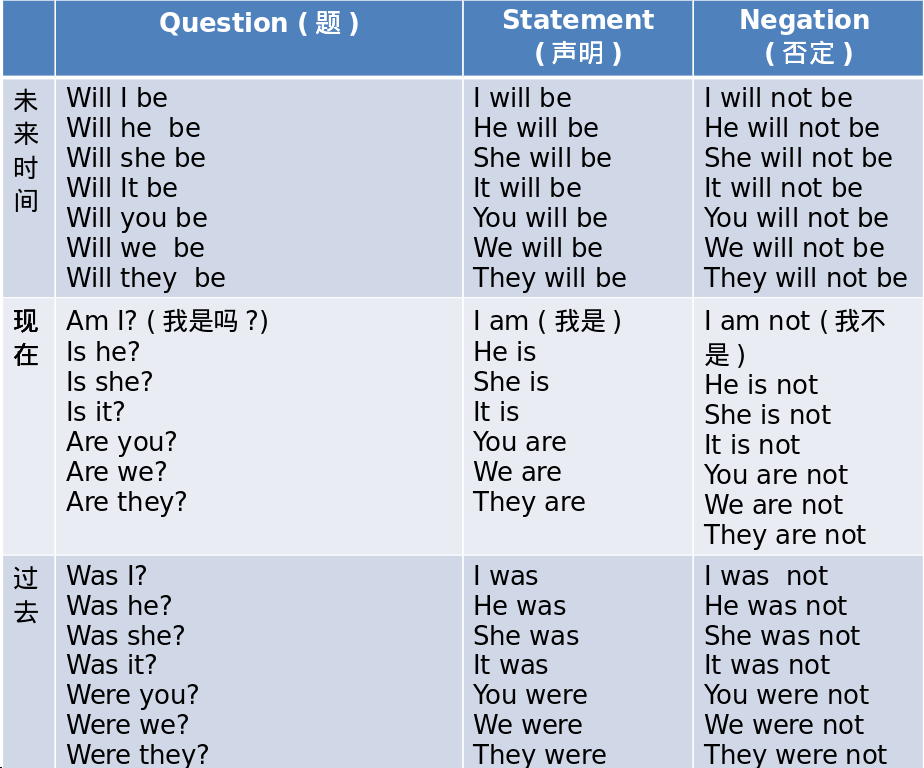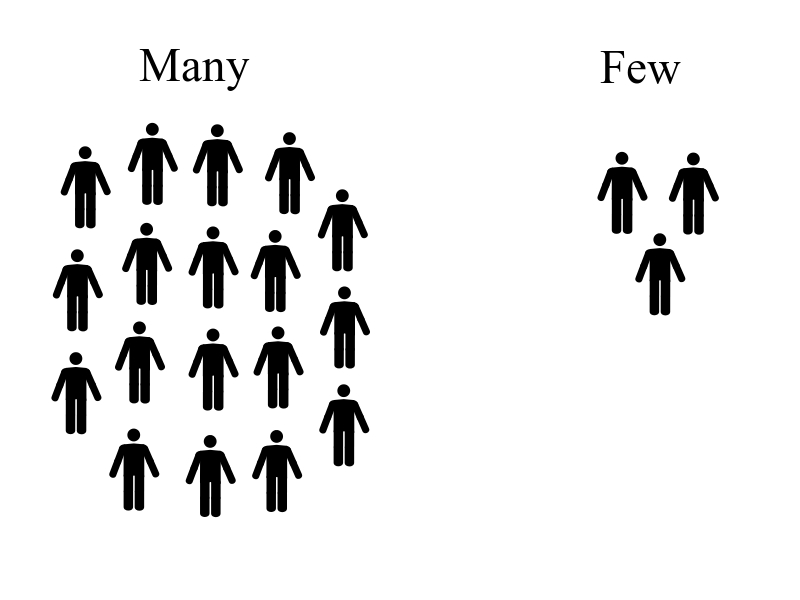在英语中,有一个单独的链接动词“ To be”。 这是一个特殊的动词,它描述在特定位置查找对象或对象。
例如,如果我想说这样的句子:
1.我在这里。
2.我在这里。
3.我会在这里。
该动词根据使用时态的不同而具有不同的形式。 让我们用一个例子看一下这个动词的所有形式
Present time (现在时间)
与代词”I”一起使用共轭动词 “am”。 例如 :
“I am here”
对于复数 (YOU, WE, THEY),使用了连接动词 “are”
“You are there”
代词 (HE / SHE / IT) 使用 “is” 动词
“It is here”
以现在时组成问题时,动词链接位于代词之前,例如:
“Am I here?” “Are you there?” “Is it here?”
在语句的否定形式中,单词 “not” 与链接动词一起使用,例如:
“I am not here.” “You are not there.” “It is not here.”
Future time / 未来时间
在带有所有代词的肯定形式中,使用链接动词 “will be”,例如:
“I will be here”
在疑问句形式中,动词 “Will” 用于代词前,动词 “be” 在代词后,例如:
“Will I be here?”
在动词 “Will” 和 “be” 之间的否定形式中,您需要使用否定词 “not”,例如:
“I will not be here.”
Past time / 过去的时间
在过去时,对于单数形式的代词或主语,使用 “was” 动词,例如:
“I was here.”
对于所有代词或复数宾语,使用链接动词 “were”,例如:
“You were there.”
在疑问句形式中,链接动词位于代词之前,例如:
“Was I here?”
“Were you there?”
在否定形式中,连接动词后使用否定符 “not”,例如:
“I was not here.”
“You were not there.”
都是相同的动词,具有相同的含义,但是在不同的时间使用不同的形式。

























